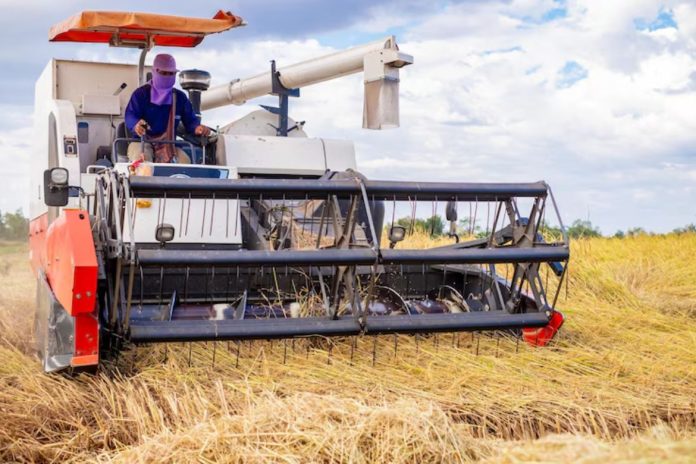Farming practices have evolved remarkably over the past few decades with the introduction of advanced machinery and technology. Two pivotal equipment used widely in agriculture today are harvesters and threshers. While they may sound similar, these farm implements have distinct purposes and benefits. This blog breaks down what sets harvesters and threshers apart and the advantages each one offers to modern farmers.
Defining Key Terms
Before delving into the specifics, it’s important to clarify what harvesters and threshers are:
- Harvesters: Harvesters, as the name denotes, are used to harvest or gather ripe crops from agricultural fields. Different types of tractor harvesters exist based on the crop – for example, combine harvesters for wheat and rice, potato harvesters, sugarcane harvesters, etc.
- Threshers: Threshers, on the other hand, are stationary machines designed specifically for threshing. Threshing is the process of loosening the edible part of cereal grain (like rice, wheat, etc.) from the scaly, inedible chaff that surrounds it.
Simply put, harvesting involves cutting and gathering crops while threshing means removal of outer coverings around grains after harvest. Now let’s look at how they work.
Working of Harvesters and Threshers
Modern harvesters and threshers utilise advanced mechanised systems to complete their respective functions in the farming process. Here is an overview of how the main types operate:
Combine Harvesters
- Modern combine harvesters are equipped to harvest crops and thresh grains in one go. This self-propelled machinery has a cutting header at the front that cuts ripe crops.
- The cut crop is then fed into the threshing drum via a conveyor belt. This drum threshes the grains by beating them, dislodging them from stalks.
- Grains fall through sieve below while chaff and straw are ejected at back. The machine also has an attached storage tank to collect harvested grains.
Potato Harvesters
- Potato harvesters dig underground potato tubers out from the soil and elevate them to the surface.
- Rotating blades shake off adhering mud while a separation unit removes vines and tops. Finally, tubers are loaded into an attached trailer.
Threshers
- A thresher has a high-speed spinning drum that beats the harvested crop, which is loaded manually by farmers.
- Impact from beating detaches grains through concave sieve below. The grains slide down while straw and chaff expelled on side.
- Additional winnowing is done to separate leftover chaff from grain before collection.
Functional Differences Between Harvesters and Threshers
While harvesters and threshers work sequentially to generate threshed food grains, they have some vital functional differences:
- Purpose: Harvesters gather mature crops from farms; threshers remove outer coverings to extract grains post-harvest.
- Working: Harvesters cut and uproot crops directly from the soil. Threshers process previously harvested crops fed manually.
- Automation: Harvesters today are highly advanced and automated. Threshers require manual feeding of the harvest.
- Mobility: Harvesters are mobile equipment capable of navigating farm fields. Stationary threshers are fixed installations.
- Versatility: Harvesters are designed for specific crops, while universal threshers can process different harvested grains.
Complementary Benefits
Despite differences in roles, harvesters and threshers complete vital interconnected tasks to deliver food grains.
- Higher Efficiency: Together, they offer improved productivity over traditional manual harvesting and threshing.
- Reduced Losses: Mechanised removal of grain close to the soil through harvesters prevents wastage. Fast threshing prevents spoilage.
- Minimal Grain Damage: Advanced threshing drums gently remove grain coverings without cracking grain.
- Time-Saving: Large, mobile harvesters cover vast areas quickly. Fast stationary threshing saves hours over manual beating.
- Lower Labour Needs: Operation by 1-2 people replaces dozens required previously, lowering overheads.
- Higher Yields: Complete, quick harvesting and threshing prevent field losses, enabling higher output per acre.
To summarise, modern harvesters swiftly cut ripened crops with minimal losses. Threshers then rapidly process the collected harvest to extract clean grains for distribution and consumption. Together, they boost productivity and profitability for present-day farmers.
Evolution of Harvesting and Threshing Practices
Harvesting and threshing methods have upgraded enormously over the generations. Let’s see some key milestones.
Ancient and Medieval Ages
Primitive hand harvesting using sickles, followed by manual threshing with cattle driving. Very slow, labour-intensive with substantial losses.
Late 18th Century
Mechanised stripping and threshing systems emerge in Europe. Steam-powered machines separate grains from stalks, improving efficiency.
19th Century
Portable threshing units with belt drives appear helping thresh harvests on multiple farms. But harvesting still manual involving hundreds of workers.
Early 20th Century
Motorised combine harvesters were introduced in the 1920s. Single machines to reap and thresh wheat dramatically increase productivity.
Mid to Late 20th Century
Sophisticated self-propelled harvesters for various crops spread globally. Advanced threshers process different grains, pulses, and oilseeds.
21st Century
Robotics and AI being harnessed to automate farm machinery. Drone-guided autonomous equipment and real-time crop monitoring through satellites realised.
The progression is self-evident. Manual processes relied on relentless human labour and time taking a massive toll on yields. Mechanisation eased drudgery, saved hours while boosting outputs multiple folds. And the future promises even smarter intelligent farming solutions.
Wrapping Up
Harvesters and threshers have distinct roles, but jointly transform the harvesting and threshing processes on farms today. Harvesters rapidly gather mature crops over vast tracts, minimising field losses. Threshers then expeditiously detach clean grains from harvested crop residue, supplying higher quality grains. Combined with other modern farming technologies, they help address food security concerns through enhanced productivity. Though initially expensive to acquire, these machines greatly benefit farmers by increasing efficiency, reducing waste, and overhead costs over the long term. Trials of autonomous equipment also offer a glimpse into farming’s tech-driven tomorrow.








